Baniyatala (Mahoba), Uttar Pradesh
It is unusual for Prem Vishwakarma to find time to sit peacefully in the verandah of her home in Baniyatala village. The 35-year-old couldn’t have imagined sitting down and doing nothing a few months ago.
Back then, her day used to consist of long hauls to find a hand pump in the village that still dispensed water. There, she would have to wait in long lines before she could fill a pot of water and bring it home. She did this at least six or seven times a day
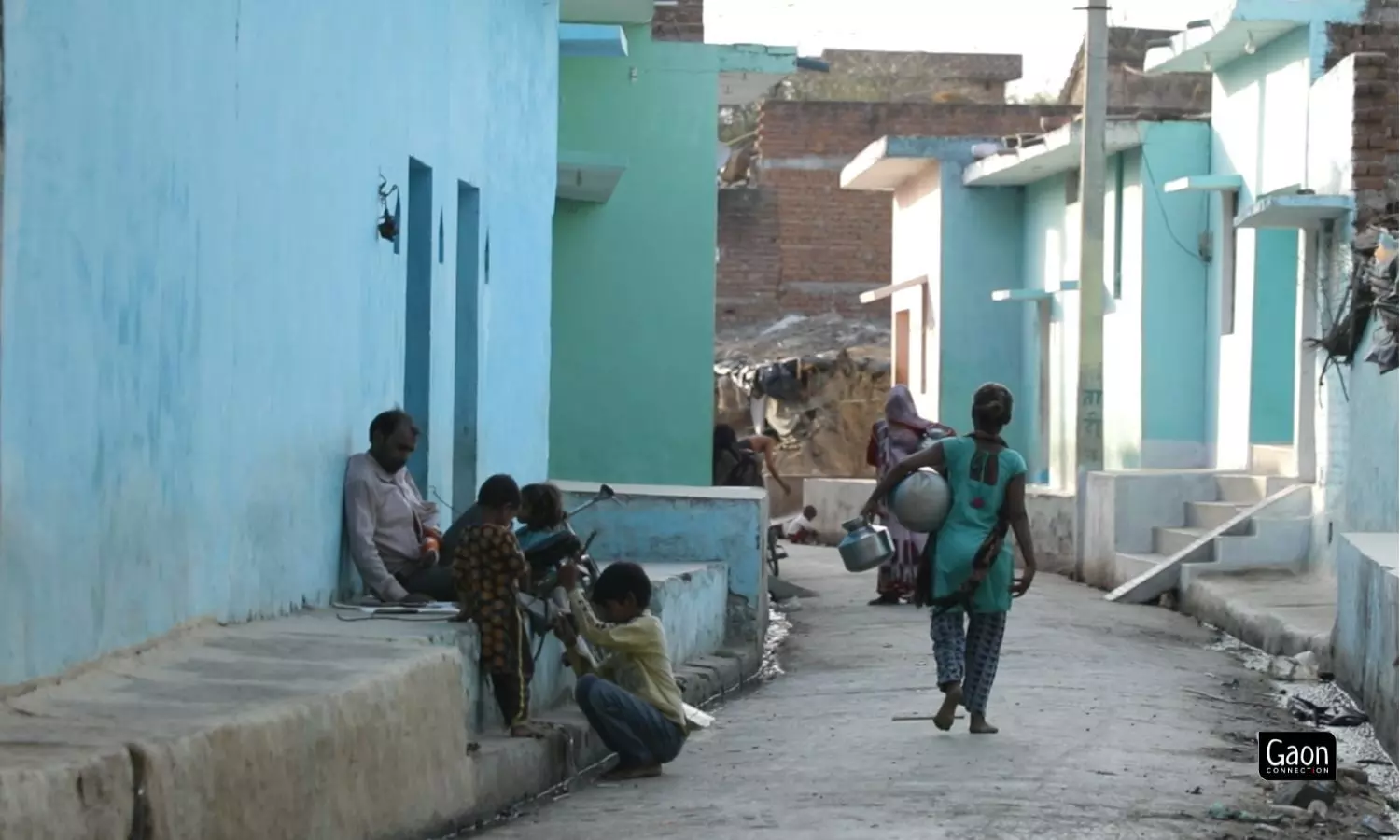
Under the Jal Jeevan Mission, drought-prone regions of Bundelkhand were identified as ‘priority’.
“Har waqt pani hi bharte rehte the (All I did all day was fetch water),” Prem recalled. Her village is located in Uttar Pradesh’s Mahoba district, which is a part of the notorious drought-prone Bundelkhand region in central India.
This summer, though, is different. The handpump that is barely a stone’s throw away from her home is still pumping out water. “Normally, it would dry up by the end of March. It is May and we still get water from it,” Prem told Gaon Connection.
Also Read: A Midsummer Pipe Dream: Pipelines laid down and taps installed, but where is the water?
Baniyatala, which falls in the drought prone Bundelkhand region, has four wells and nine handpumps from where the villagers get their potable water. This year, all these 13 sources still have water even in the peak summer heat, something unheard of before.
“Previously, all the wells dried up and at least four handpumps stopped giving water. But this year it is different. Ever since we started medh bandi in our agricultural fields, water has been plentiful,” Prem said.
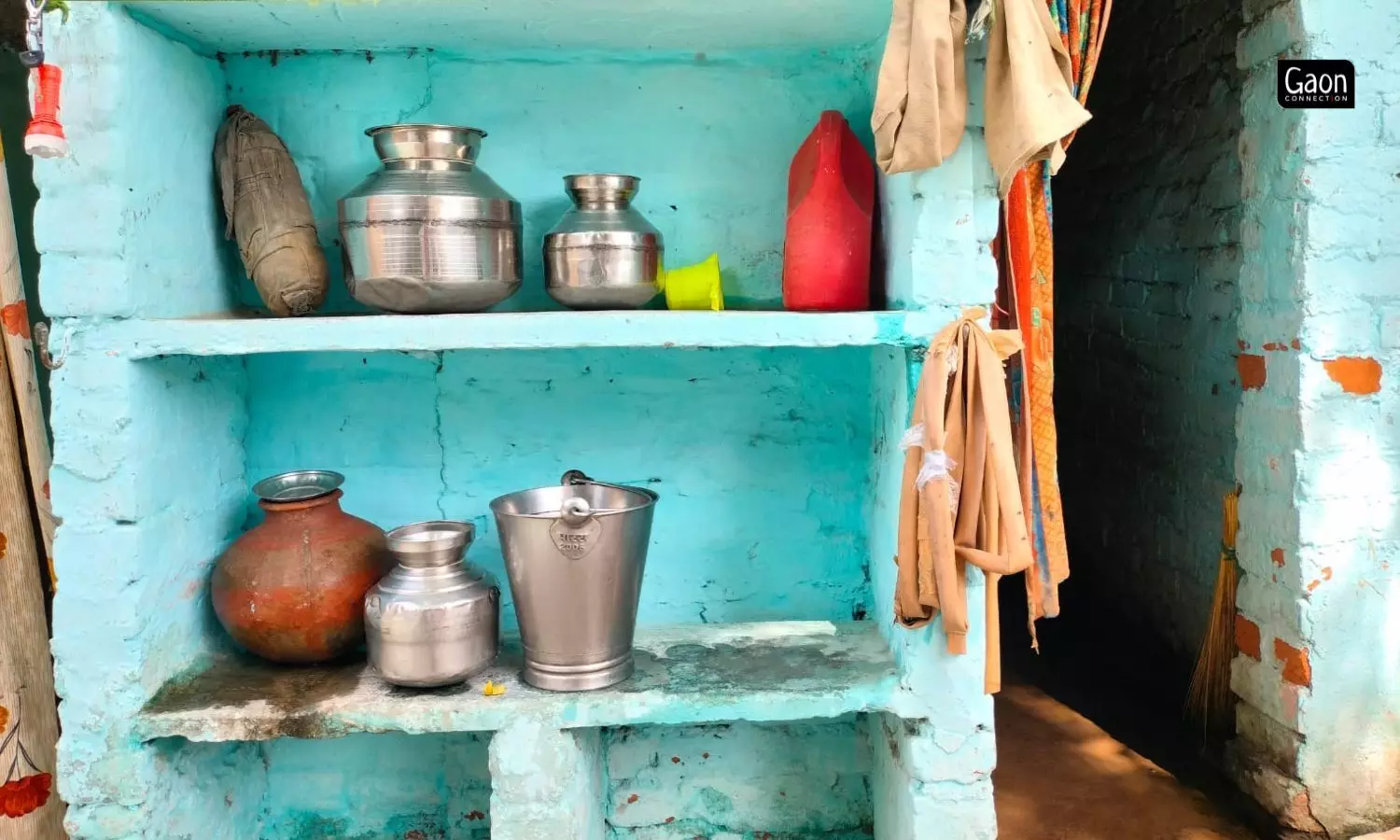
Gramonnati advised the villagers to adopt medh-bandi, or making bunds in the fields, to retain rainwater within.
Medh bandi refers to building bunds in farmlands to capture rainwater and help raise groundwater level and increase soil moisture.
Three years ago, in 2020 a non-profit called Gramonnati, based in Mahoba launched water harvesting programmes in the village, which is located 235 kilometres from the state capital Lucknow. The project was funded by the Uttar Pradesh government under its initiative for ‘Doubling Farmers Income in Bundelkhand region’.
Gramonnati encouraged the villagers to adopt medh–bandi, or making bunds in the fields, to retain rainwater within.
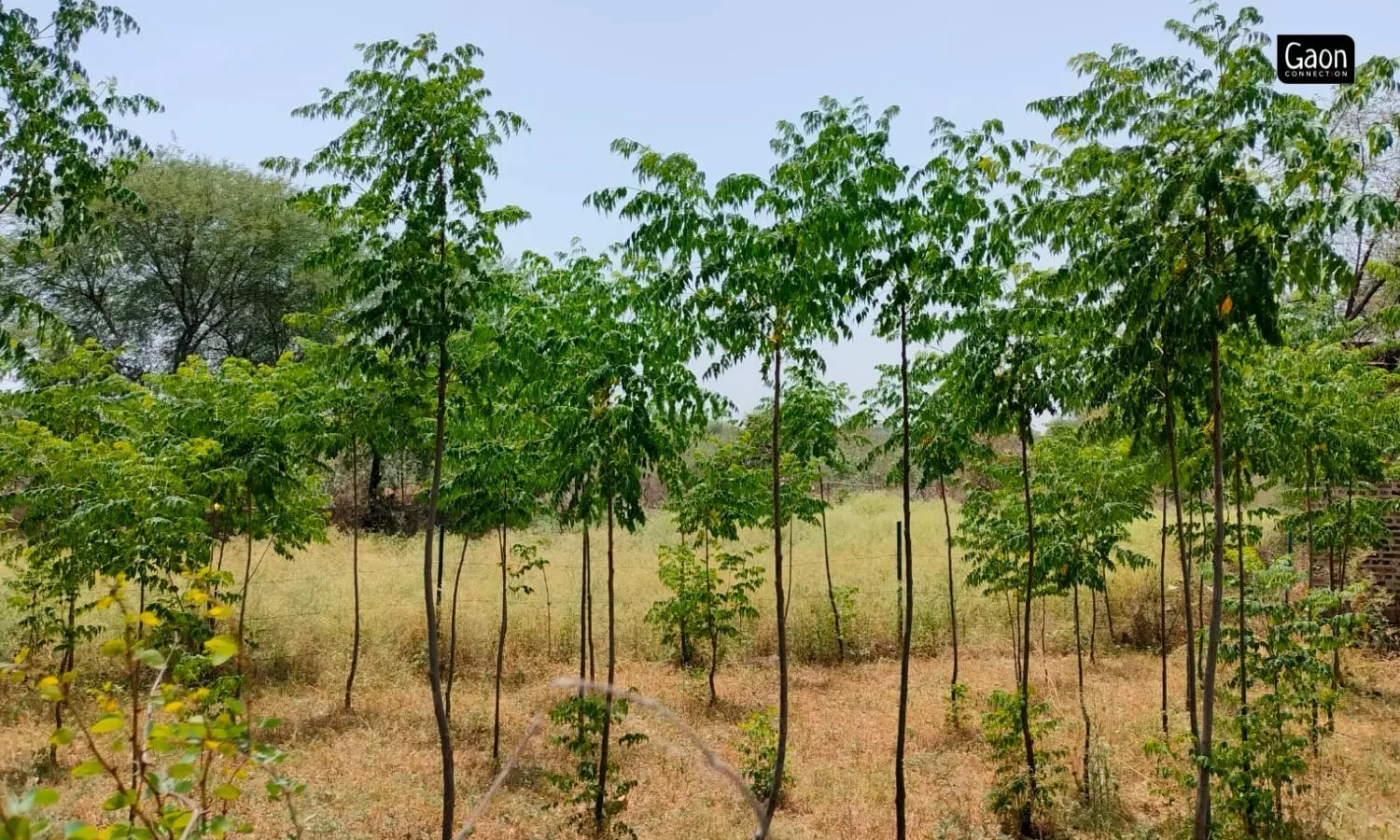
The non-profit has planted tree saplings along the bunds for holding the soil better.
“Building the medh prevents runoff and the rainwater gets absorbed in the ground. This recharges the groundwater and also prevents the loss of the fertile topsoil from the fields,” RP Mishra, a functionary of the non-profit, explained.
Mahoba is situated in the Bundelkhand region which is chronically parched and has poor groundwater reserves. According to the Central Groundwater Board (CGWB), in 2022, the Kabrai block of Mahoba district, under which Baniyatala village falls, was categorised as ‘semi-critical’ in terms of subterranean water reserves in 2022.
![Raju Yadav, a farmer who owns four bighas of land [0.64 hectare] has recorded a hike in yield. Raju Yadav, a farmer who owns four bighas of land [0.64 hectare] has recorded a hike in yield.](https://en.gaonconnection.com/wp-content/uploads/2024/08/365109-8.webp)
Raju Yadav, a farmer who owns four bighas of land [0.64 hectare] has recorded a hike in yield.
Under the Jal Jeevan Mission, drought-prone regions of Bundelkhand and Vindhyachal, spread across Uttar Pradesh and neighbouring Madhya Pradesh, were identified as ‘priority’ and, an official announcement was made saying the villages in these areas were to get their tap connections by the end of 2022.
But, Prem, and many others like her, still don’t have a water pipeline connection in her house, making the functional handpump in the vicinity a boon.
Rajesh Tiwari, a 33-year-old farmer is pleased about the water situation too.
“For a decade this handpump near my home had water only till around Holi (March). After that it reluctantly pumped no more than a bucket or two of water. How will two buckets of water suffice a family of six? But, it’s May and the water is still available,” he said happily.
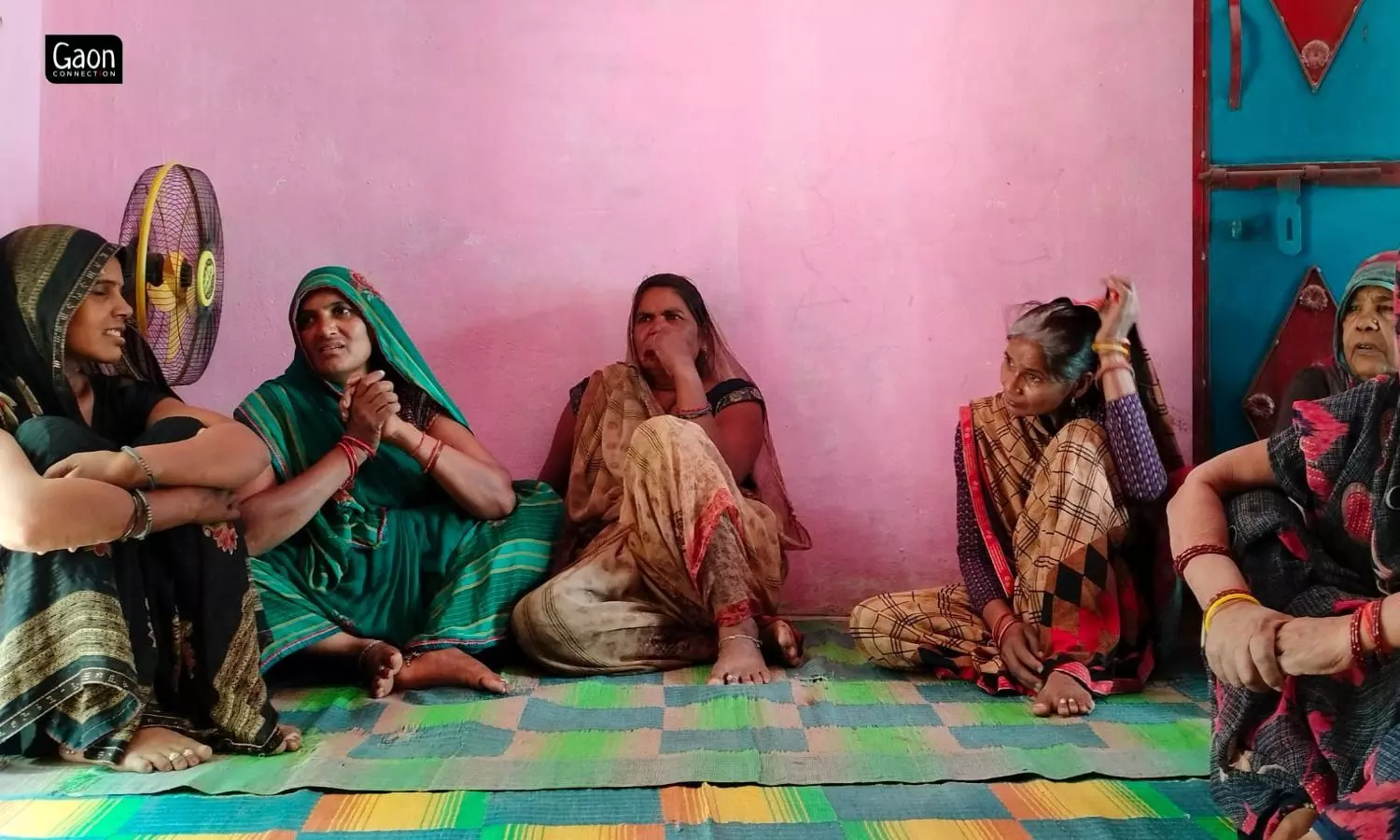
The Baniyatala farmers needed help to prevent topsoil run-off in the absence of bunds, which had led to a drop in crop production.
“The medh–bandi has had a huge impact this year. It’s a blessing,” he added.
For Tiwari it is indeed a blessing. He had to carry his clothes to the fields to wash them using borewell water. “Then, I would fill water in cans and carry it in my trolley back home,” he told Gaon Connection.
The building of bunds
Gramonnati identified five active farmers of the village to form a water committee that would educate fellow farmers of Baniyatala about the impact of medh–bandi on their agricultural produce as well as groundwater reserves.
“We held weekly meetings in the village and tried to convince farmers to adopt the bunds in their fields. The meetings went on for four hours sometimes. Many were reluctant at first,” Krishna Kumar, a member of the water committee, told Gaon Connection.
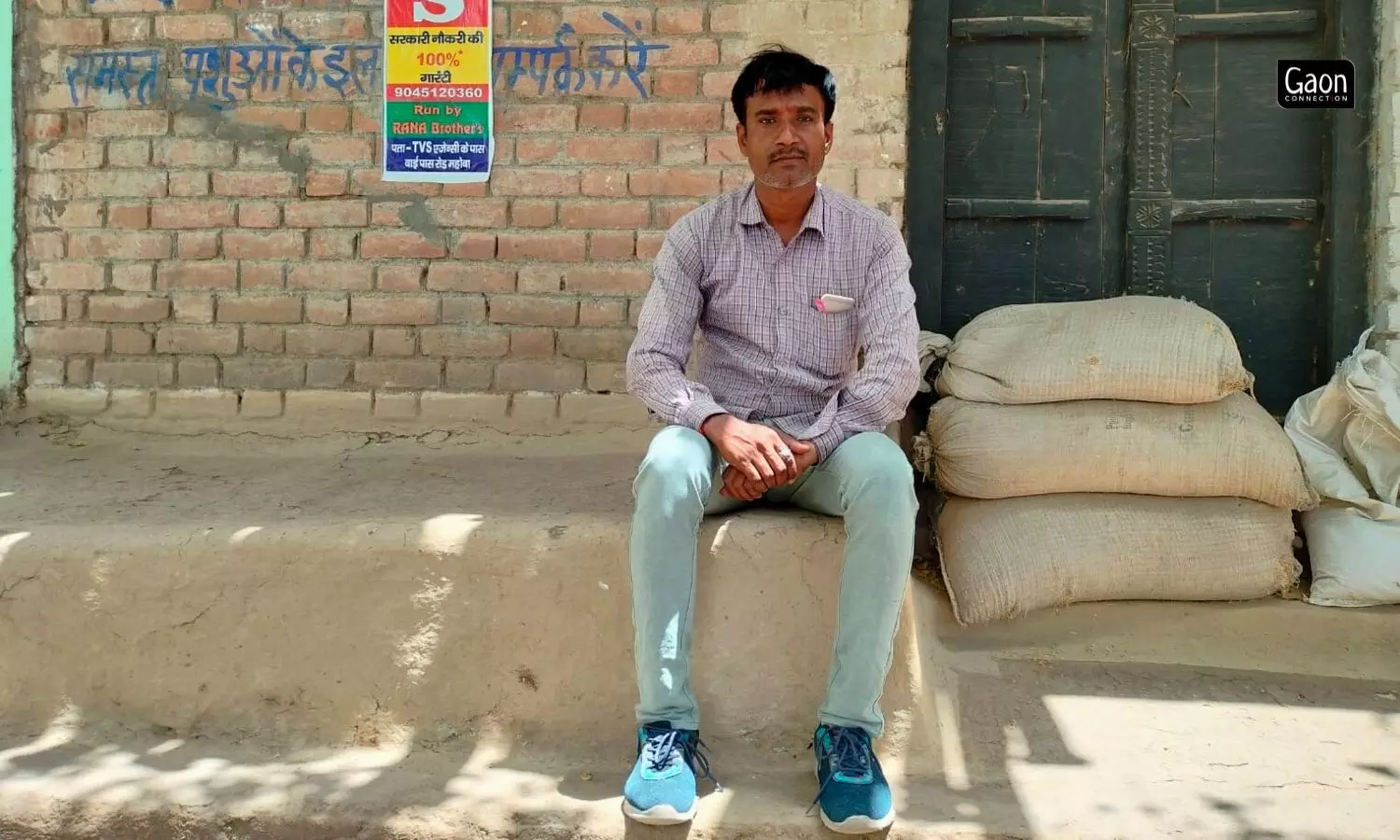
Manoj Mishra from Gramonnati, held regular kisaan goshthi or farmer meetings in the village to discuss the problem.
But, with repeated awareness efforts, Baniyatala had 293 acres of land — out of 370 hectares of cultivable land — that now has medh–bandi. After the farmers came on board, the water committee ensured that the bunds were built.
“The bunds were built keeping the tilt of the land in mind. The mud from the fields of the farmers were used to build a periphery which retained the rainwater and also prevented mitti ka katav (top soil run off),” Krishna Kumar, the water committee member said.
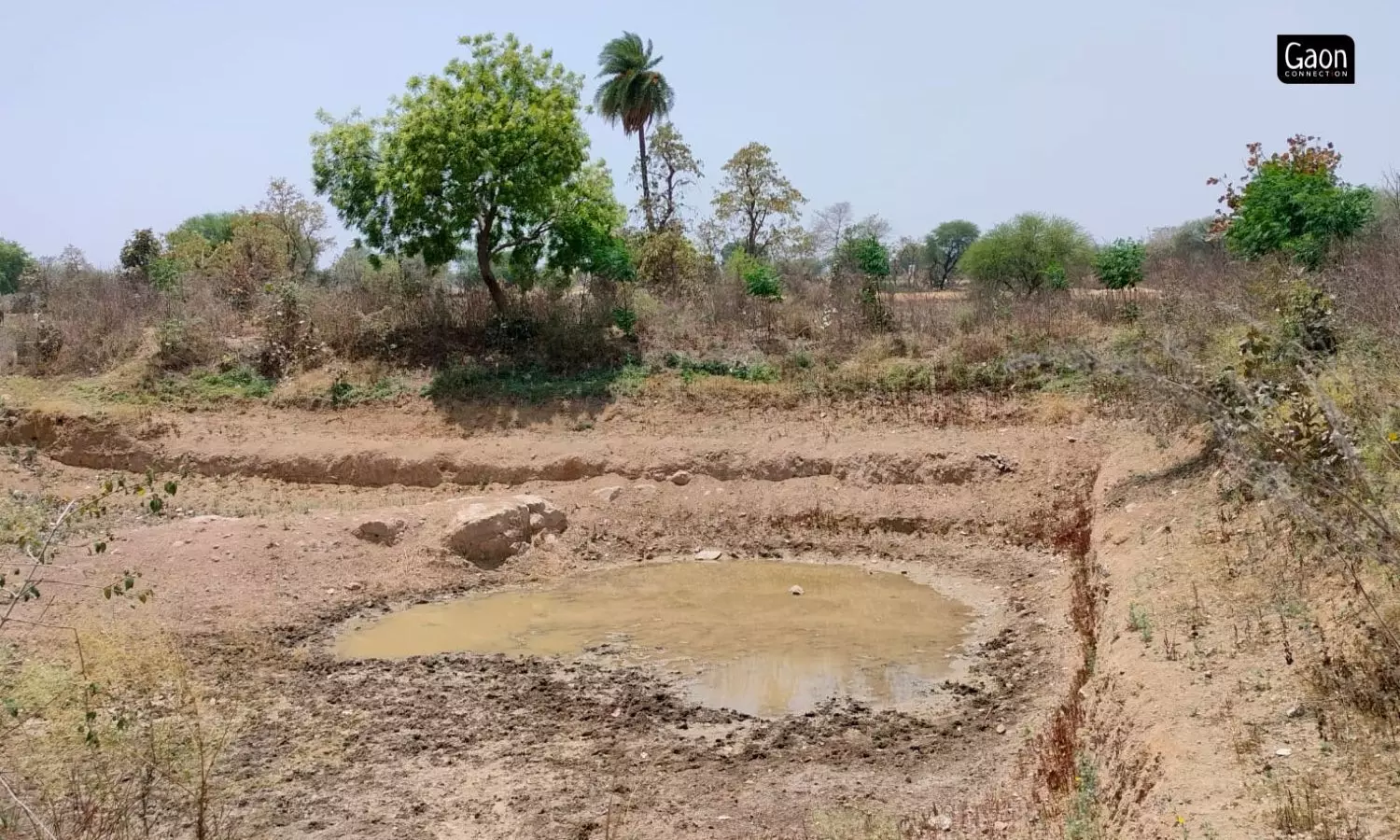
Three years ago, in 2020 a non-profit called Gramonnati, based in Mahoba launched water harvesting programmes in the village.
The bunds were constructed between April and June, in 2020 and 2021. Under the cash-for-work model, farmers like Prem worked for over two months to earn Rs 300 per day.
Also Read: Dugwells make a comeback in Bihar’s villages
Rise in groundwater levels
The medh–bandi has led to a significant improvement in groundwater recharging. According to Manoj Mishra, in March, 2020 and March, 2021, on an average, there was an increase of 0.16 metres in the water level in the wells.
The water level (measurement from the rim of the well to the point where water is available) decreased from 6.35 metres to 6.19 metres.
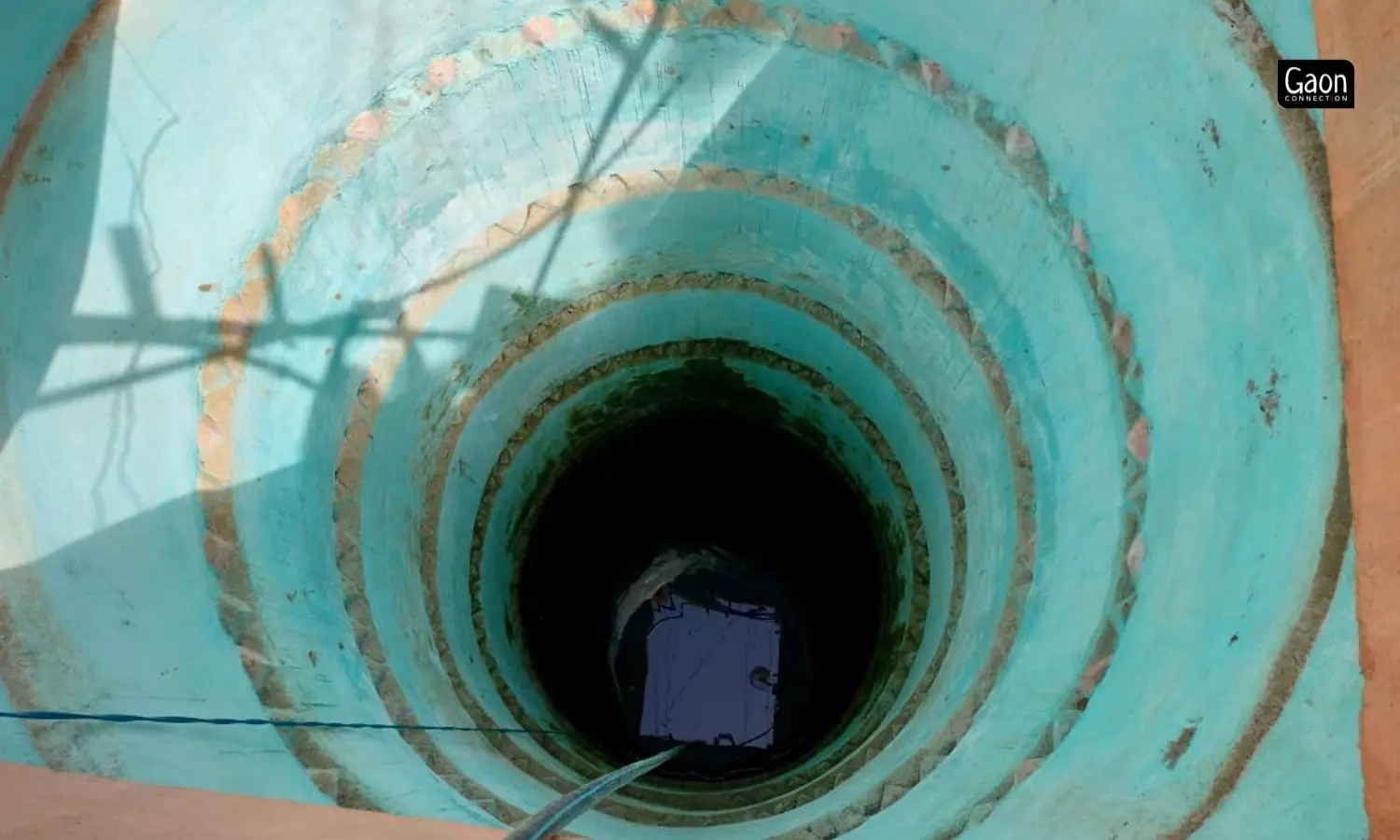
Baniyatala, which falls in the drought prone Bundelkhand region, has four wells and nine handpumps from where the villagers get their potable water.
Three of the wells which were recorded as ‘dry’ in March 2020, had water in the same month of 2021. According to the post monsoon data, the wells on an average registered an increase of 1.17 metres of water. This was in September of 2020 and 2021.
In order to further enhance water conservation and prevent runoffs, the non-profit has planted tree saplings along the bunds, planted grass to be used as cattle fodder and built khet talaab (farm ponds) to store rainwater for irrigation purposes.
Also Read: Reviving Dying Wisdom
A hike in crop yield and incomes
The Baniyatala farmers needed help to prevent topsoil run-off in the absence of bunds, which had led to a drop in crop production.
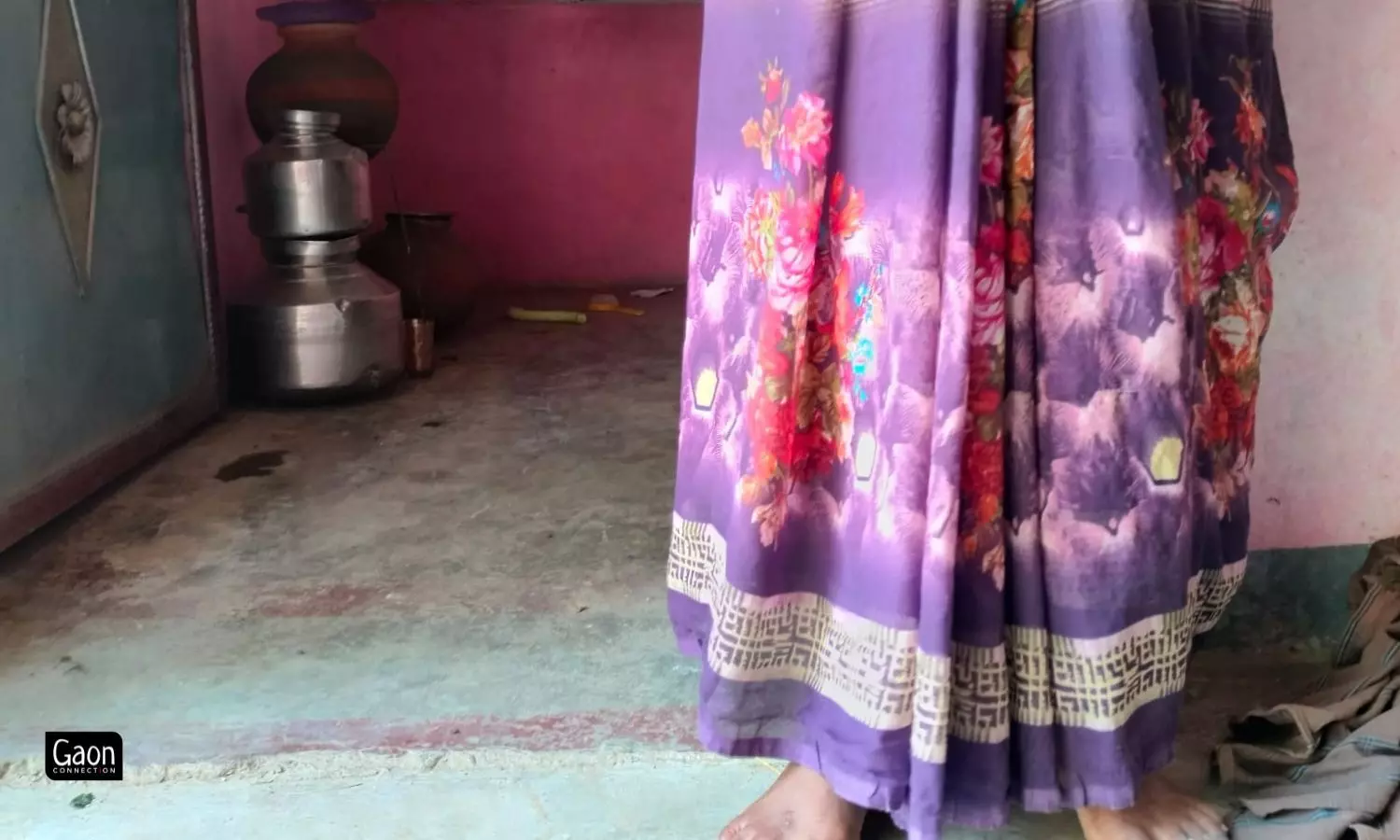
Prem Vishwakarma’s day would be a series of long hauls to find a hand pump in the village that still dispensed water.
Another official of Gramonnati, Manoj Mishra, held regular kisaan goshthi or farmer meetings in the village to discuss the problem.
“Because of medh bandi work in my field, my production increased from three quintals of wheat per bigha [0.16 hectare] to eight quintals per bigha,” farmer Chiddu Vishwakarma, told Gaon Connection. The 45-year-old Vishwakarma who owns four bighas [0.64 hectare] of land, grows wheat as the rabi (winter) crop and, till last year produced three quintals of wheat per bigha.
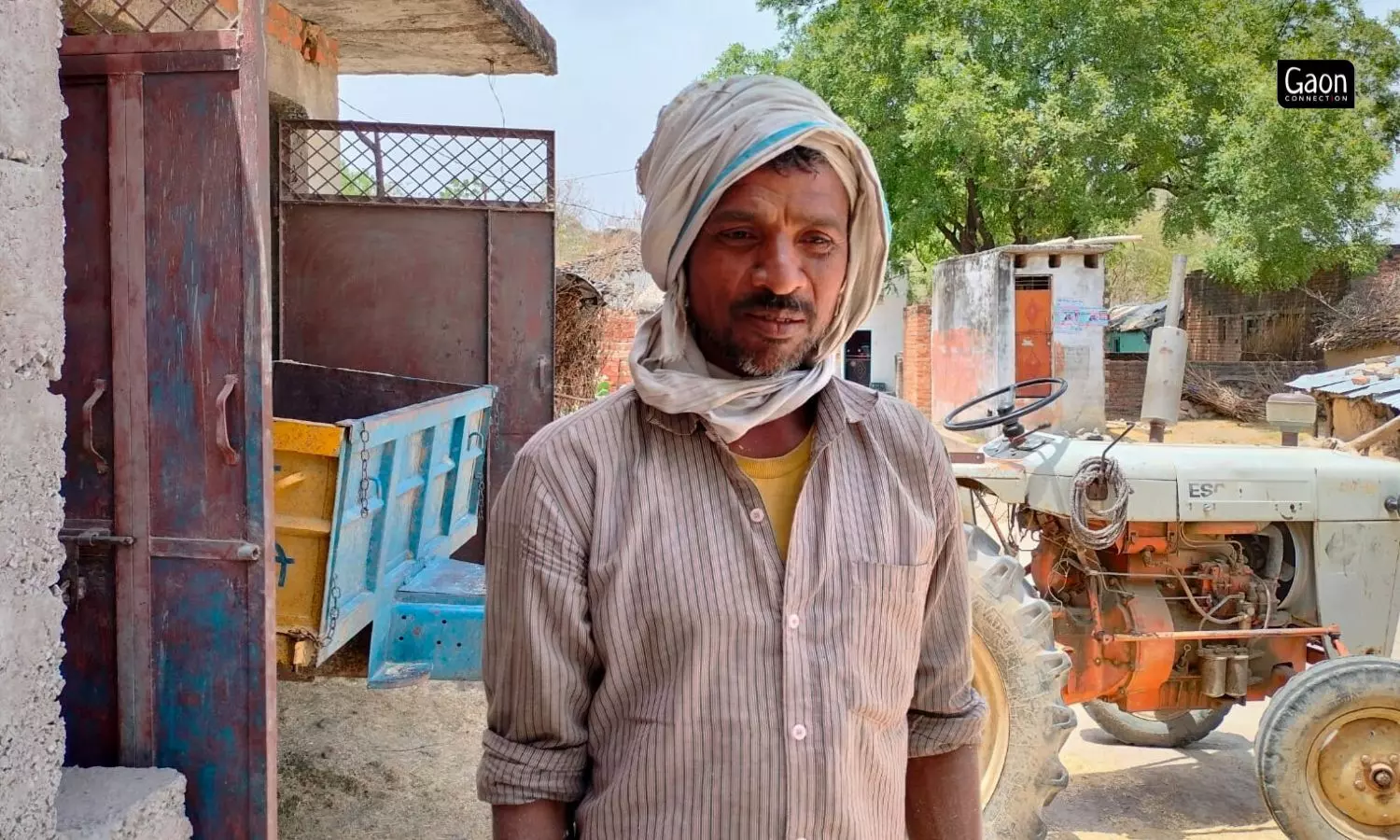
Chiddu Vishwakarma has adopted bunds on his land and saw a rise in the agricultural produce.
While his earlier yield was enough to feed his family, this year Vishwakarma sold the extra five quintals of wheat for Rs 2,000 per quintal. The income of Rs 10,000 holds a substantial value for the marginal farmer who holds less than one hectare of land.
“I am saving this money to build a home,” he said.
Raju Yadav, a farmer who owns four bighas of land [0.64 hectare] has also recorded a hike in yield. “I used to get only five quintals of wheat per bigha, but now I get eight quintals, from the same land,” he told Gaon Connection.


















